
Invasion: America, subtitled "Death Throes of the Superpower", is a near-future board wargame published by SPI in 1976 that simulates a hypothetical coordinated attack on North America by various factions.

StarForce: Alpha Centauri, subtitled "Interstellar Conflict in the 25th Century", is a science fiction board game published by Simulations Publications Inc. (SPI) in 1974. It was the first mass-market science fiction board wargame, and was a best-seller for SPI.

Armageddon: Tactical Combat, 3000-500 BC is a board wargame first published by Simulations Publications Inc. (SPI) in 1972 in Strategy & Tactics, then released as a stand-alone game, then reimplemented as Chariot: Tactical Warfare in the "Biblical" Age, 3000-500 BC.

Renaissance of Infantry, subtitled "Tactical Warfare, 1250 A.D.–1550 A.D.", is a board wargame published by Simulations Publications in 1970 that simulates famous medieval battles.
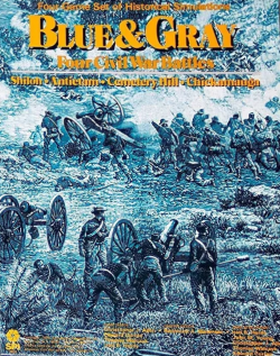
Blue & Gray: Four American Civil War Battles is a board wargame originally published by Simulations Publications, Inc. (SPI) in 1975 that simulates four battles from the American Civil War.
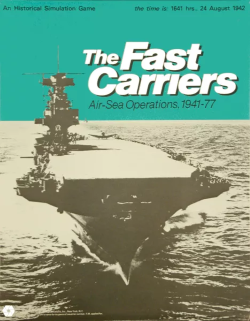
The Fast Carriers, subtitled "Air-Sea Operations, 1941–77" is a board wargame published by Simulations Publications Inc. (SPI) in 1975 that simulates naval combat involving aircraft carriers from 1941 to the mid-1970s.

Island War: Four Pacific Battles is a collection of four board wargames published in 1975 by Simulations Publications Inc. (SPI) that simulates various battles between American and Japanese forces during the Pacific Campaign of World War II.

MechWar '77, subtitled "Tactical Armored Combat in the 1970s", is a board wargame published by Simulations Publications Inc. (SPI) in 1975 that simulates hypothetical tank combat in the mid-1970s between various adversaries, using the same rules system as the previously published Panzer '44.

Napoleon at War, subtitled "Four Battles", is a collection of four board wargames published by Simulations Publications Inc. (SPI) in 1975 that simulates various battles fought by Napoleon.

Bloody Ridge, subtitled "Turning Point on Guadalcanal, September 1942", is a board wargame published by Simulations Publications Inc. (SPI) in 1975 that simulates the Guadalcanal Campaign during World War II. The game was originally published as part of the Island War: Four Pacific Battles "quadrigame" — a gamebox containing four games simulating four separate battles that all use the same rules. Bloody Ridge was also published as an individual "folio game."
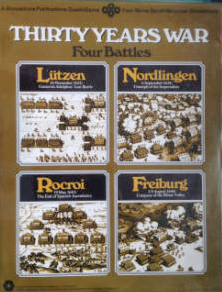
Thirty Years War, subtitled "Four Battles", is a "quadrigame" — four separate board wargames packaged in one box that use a common set of rules — published by Simulations Publications Inc. (SPI) in 1976. The four games simulate different battles during the Thirty Years' War, and were sold individually as well as in the quadrigame format. Some of the games were well received by critics, but overall, the quadrigame did not sell well.

Blue & Gray II, subtitled "Four American Civil War Battles", is a collection of four board wargames originally published by Simulations Publications, Inc. (SPI) in 1975 that each simulate a battle from the American Civil War. It is the sequel to Blue & Gray published earlier in the year. Each of the four games was also published as individual "folio games."

Frigate: Sea War in the Age of Sail is a board wargame published by Simulations Publications Inc. (SPI) in 1974 that simulates naval combat in the 18th and 19th century Age of Sail.

Jena-Auerstadt: The Battle for Prussia is a board wargame published by Simulations Publications Inc. (SPI) in 1975 that simulates the twin battles of Jena and Auerstadt in October 1806. It was one of four games that were part of the "quadrigame" titled Napoleon at War, but it was also released as an individual "folio game" packaged in a shrinkwrapped cardstock folio. Jena-Auerstadt was rated highly in a 1976 poll of favorite wargames, but critics questioned whether its simplicity was capable of simulating a complicated two-part battle.
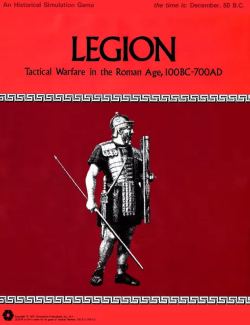
Legion: Tactical Warfare in the Roman Age, 100BC-700AD is a board wargame published by Simulations Publications, Inc. (SPI) in 1975 that simulates battles involving Roman legions against a variety of historical foes. Originally published by SPI as Centurion, the game was revised and republished with the title Legion as part of a series called PRESTAGS.
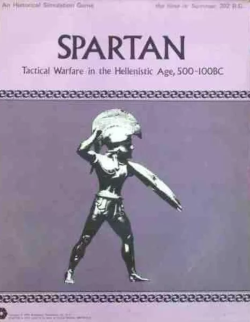
Spartan: Tactical Warfare in the Hellenistic Age, 500-100BC is a board wargame published by Simulations Publications, Inc. (SPI) in 1975 that simulates battles during the rise of Greece to the period of Roman rule. Originally published by SPI as Phalanx, the game was revised and republished with the title Spartan as part of a series called PRESTAGS.
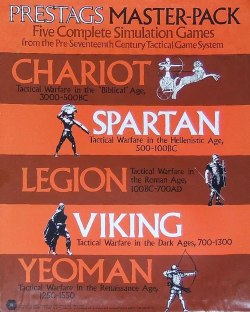
PRESTAGS is a collection of five board wargames published by Simulations Publications, Inc. (SPI) in 1975 that simulates battles from the Bronze Age to the Renaissance. The five games were originally published as individual games with their own set of rules before being collected into one box and their various rules revised to produce one common set of rules.
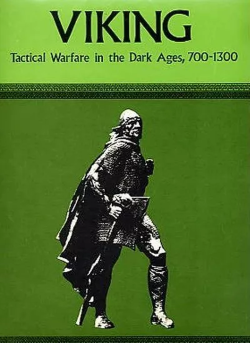
Viking, subtitled "Tactical Warfare in the Dark Ages, 700-1300", is a board wargame published by Simulations Publications, Inc. (SPI) in 1975 that simulates battles in Europe and the Middle East during the Medieval period. Originally published by SPI as Dark Ages, the game was revised and republished with the title Viking as part of a collection of games called PRESTAGS.

Yeoman, subtitled "Tactical Warfare in the Renaissance Age, 1250-1550", is a board wargame published by Simulations Publications, Inc. (SPI) in 1975 that simulates battles during the Late Medieval period and Renaissance. Originally published by SPI as Renaissance of Infantry, the game was revised and republished with the title Yeoman as part of a collection of games called PRESTAGS.
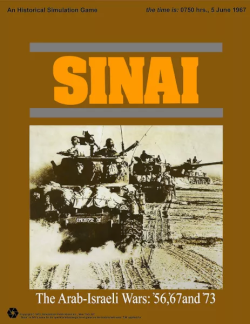
Sinai: The Arab-Israeli Wars – '56, '67 and '73 is a board wargame published by Simulations Publications Inc. (SPI) in 1973 that simulates three conflicts in the Middle East: The 1956 Suez Crisis, the 1967 Six-Day War, and the just-completed 1973 Yom Kippur War. The staff of SPI had been developing a wargame simulating a hypothetical Middle East conflict when war broke out in October 1973. Using newspaper and television reports, SPI found that their envisioned simulation was not accurate, and quickly redeveloped the game, releasing it only weeks after a ceasefire had been signed. The game proved very popular, and remained a best-seller for SPI during the 1970s.




















